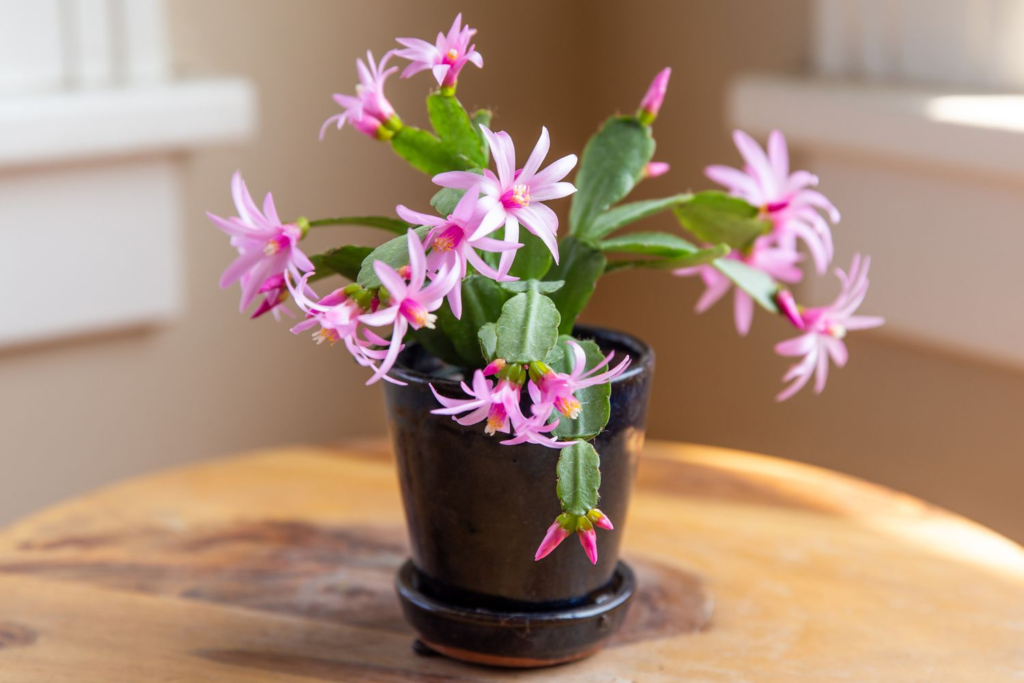In the realm of flowering plants, the Easter Cactus stands as a true marvel, captivating enthusiasts with its vibrant blossoms and unique characteristics. As we explore the beauty of this particular cactus, we’ll delve into its origins, care tips, and the spectacular display of blooms that make it a favorite among plant enthusiasts during the Easter season.
The Easter Cactus, scientifically known as Hatiora gaertneri, is a delightful succulent that belongs to the cactus family. Native to Brazil, this cactus has gained popularity for its striking flowers that bloom around the Easter holiday, hence its name. In this article, we’ll uncover the enchanting features of the Easter Cactus and unravel the secrets to nurturing its beauty in your own indoor garden.
Read more about Garden Design Ideas
The Easter Cactus: A Botanical Marvel
Distinctive Characteristics
The Easter Cactus distinguishes itself with flat, segmented stems and vibrant, pendulous flowers that bloom from the tips. Unlike typical cacti, its lack of spines contributes to its approachable and unique appearance.
Blooming Schedule
As the name suggests, the Easter Cactus typically blooms in spring, with its peak display of flowers occurring around the Easter holiday. The blossoms come in an array of colors, including shades of pink, red, orange, and even lavender, adding a burst of color to any indoor space.
Cultivating Easter Cactus at Home
Ideal Growing Conditions
Easter Cacti thrive in indirect light, making them well-suited for indoor environments. Place them near a window with filtered sunlight to ensure optimal growth. Additionally, maintaining a consistent temperature between 60-70°F (15-24°C) fosters a healthy environment for these plants.
Soil and Potting
Plant Easter Cactus in well-draining soil, preferably a mix designed for cacti or orchids. A slightly acidic to neutral pH is ideal. Choose a pot with drainage holes to prevent waterlogging, as excessive moisture can be detrimental to the plant.
Watering and Humidity
While the Easter Cactus appreciates regular watering, it’s crucial to avoid waterlogged conditions. Allow the top inch of soil to dry between watering sessions. Maintaining moderate humidity levels is beneficial, especially in dry indoor environments.
Fertilizing
During the growing season (spring and summer), feed your Easter Cactus with a balanced, water-soluble fertilizer every 2-4 weeks. Reduce or cease fertilization during the fall and winter months when the plant enters a period of dormancy.

Encouraging Easter Cactus Blooms
Mimicking Natural Conditions
To encourage blooming, simulate the natural conditions of the Easter Cactus. Provide a period of cool temperatures (around 50-55°F or 10-13°C) for about 6 weeks in late fall or early winter. This cool period stimulates the formation of flower buds.
Monitoring Light Exposure
While the Easter Cactus prefers bright, indirect light, during the budding stage, it benefits from reduced exposure to light. Placing the plant in a dark or low-light location for 12-14 hours daily can promote bud formation.
Pruning for Shape
Pruning the Easter Cactus after flowering helps maintain a compact and attractive shape. Trim back leggy stems to encourage branching, and remove any dead or damaged segments to promote overall plant health.
Troubleshooting Common Issues
Addressing Overwatering
Overwatering is a common issue with Easter Cacti, leading to root rot. Ensure proper drainage and allow the soil to dry out between watering sessions. Adjust your watering routine based on the specific needs of your plant and the environmental conditions.
Combating Pests
Keep an eye out for common pests like spider mites and scale insects. Regularly inspect the leaves and stems, and if pests are detected, treat them promptly with insecticidal soap or neem oil.
The Joy of Easter Cactus Blooms
The moment when the Easter Cactus bursts into bloom is a truly joyous occasion for plant enthusiasts. The vibrant flowers, often in shades reminiscent of sunrise hues, create a captivating display that brings a touch of springtime indoors.
Conclusion
In the realm of succulents, the Easter Cactus stands out as a blooming wonder, captivating hearts with its unique appearance and seasonal blossoms. Whether you’re a seasoned plant enthusiast or a beginner looking to add a touch of natural beauty to your home, the Easter Cactus proves to be a rewarding and delightful addition to any indoor garden. Follow the care tips, mimic its natural conditions, and witness the spectacular blooms that unfold, heralding the arrival of spring in your own living space.








Comments 1